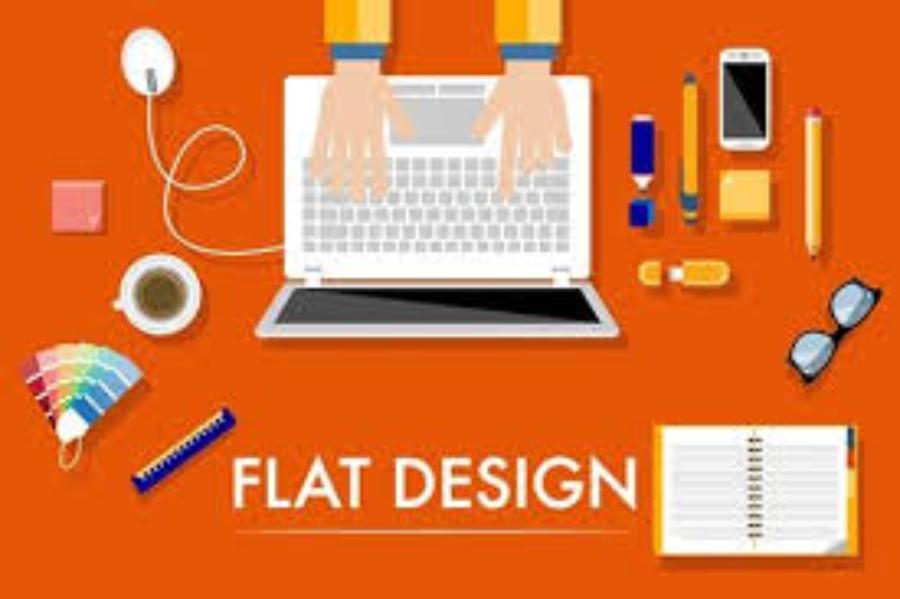Best Selling Products
Common Health Problems in Designers and Prevention Solutions
Nội dung
- 1. The Importance of Health for Designers
- 2. Common Health Problems in Designers
- 2.1. Neck, Shoulder, Back Pain and Musculoskeletal Pain
- 2.2. Glasses and Low Vision Syndrome
- 2.3. Psychological Stress and Fatigue
- 2.4. Sleep Disorders
- 2.5 Carpal tunnel syndrome due to long-term use of mouse and keyboard
- 3. How to Prevent and Protect Designers' Health
- 3.1 Protect Your Eyes
- 3.2. Create a Healthy Workspace
- 3.3. Do Light Exercises
- 3.4. Maintain a Healthy Diet
- 3.5. Ensure Adequate Sleep
- 4. Conclusion
The article provides detailed information about health problems that Designers are susceptible to due to the nature of their work, along with preventive measures to help protect their health and maintain long-term work performance.

The work of a designer always requires constant creativity, the ability to work under high pressure and long hours in front of a computer screen. However, few people know that this job can potentially pose many health risks that are not always immediately recognized. The following article will analyze the health problems that designers are susceptible to and provide effective ways to prevent them.
1. The Importance of Health for Designers
In the world of design, creativity and quick thinking are important, but without proper health care, these factors will be seriously affected. Sitting in front of the computer for a long time, lack of exercise and work pressure can lead to serious health problems. Therefore, being aware of these issues will help designers protect themselves and continue to develop their creativity in a sustainable way.
.jpg)
Health plays an extremely important role for designers, not only directly affecting creativity but also determining long-term work performance. In a working environment that requires high concentration and often faces deadline pressure, maintaining a healthy body helps designers have enough energy and a clear mind to create quality products. In addition, healthy living habits, such as a balanced diet, regular exercise and reasonable rest, also help reduce common health problems in the industry such as back pain, stress or eye strain. Therefore, focusing on health care is not only a personal responsibility but also a decisive factor for sustainable development in a design career.
2. Common Health Problems in Designers
Common health problems in designers often stem from the nature of their work, which requires sitting in front of a computer for long periods of time, high work intensity, and constant creative pressure. Some common problems include:
2.1. Neck, Shoulder, Back Pain and Musculoskeletal Pain
One of the most common health problems that designers are prone to is neck, shoulder, back and musculoskeletal problems. This comes from sitting in front of the computer for long periods of time in the wrong posture, with little change of position or lack of movement.
Cause: Sitting for long periods of time and frequently looking down at a computer screen puts strain on the muscles in your neck and back. In addition, not moving for many hours at a time can cause numbness and fatigue in the body, and can even lead to bone and joint problems such as spinal degeneration.
Solution: Establish a proper sitting posture, use an office chair with a supportive backrest. Change your posture regularly and do gentle stretching exercises to reduce stress on your body. In addition, taking short breaks after every hour of work, doing simple stretching exercises, and participating in regular physical activities are also effective solutions to protect your health. Using support equipment such as an ergonomic chair and a suitable desk also plays an important role in reducing pressure on the musculoskeletal system. Paying attention to health not only increases work efficiency but also ensures a long-term quality of life for designers.
2.2. Glasses and Low Vision Syndrome
Eyes are an extremely important part of a designer's body, however, working continuously in front of a computer screen will cause vision problems. Computer vision syndrome, also known as "computer vision syndrome", is a very common condition among people who work in design-related jobs.
.jpg)
Cause: Staring at a screen for hours without taking a break can lead to eye strain, dry eyes, and even vision loss over time.
Solution: Apply the 20-20-20 rule: every 20 minutes of work, look at an object about 20 feet (6 meters) away for at least 20 seconds. In addition, use blue light blocking glasses and adjust the screen brightness to protect your eyes properly and adequately, as well as maintain a scientific sitting posture. In addition, regular eye health check-ups and eye relaxation exercises are also effective solutions to protect eyesight in the modern working environment.
2.3. Psychological Stress and Fatigue
The job of a designer is always faced with time pressure, constant creativity and the need to complete multiple projects at the same time. This can lead to stress, anxiety and chronic fatigue, affecting mental health.
Cause: The nature of the job requires completing projects on tight deadlines, facing many strict requirements from customers and colleagues. This can easily cause stress and reduce creativity.
Solution: Manage your time effectively, break down projects into smaller tasks, and take regular breaks. Learn to manage stress through relaxation techniques such as meditation, yoga, or light exercise. More importantly, talking to a colleague or a mental health professional when necessary can help you deal with work stress in a positive way.
2.4. Sleep Disorders
Sleep disorders are a common health problem that many designers face, especially in a work environment that requires high creativity and time pressure. Designers who work late at night or have a habit of staying up late to complete work regularly may have sleep problems. This seriously affects physical and mental health.
Causes: The main causes are often due to working overtime, prolonged use of electronic devices and psychological stress due to deadlines. Working without a fixed schedule and lack of sleep can cause hormonal imbalance and affect the nervous system.
Solution: Establish a regular sleep routine, create a quiet sleeping space, and avoid using electronic devices before bed. Make sure you get enough rest and limit your exposure to blue light from screens before bed. Additionally, practicing relaxation techniques such as meditation, yoga, or reading can also help improve sleep quality, thereby improving work performance and overall health.
2.5 Carpal tunnel syndrome due to long-term use of mouse and keyboard
Carpal tunnel syndrome is one of the most common health problems that designers often encounter, especially due to prolonged use of mouse and keyboard. This condition occurs when the median nerve is compressed at the carpal tunnel, leading to symptoms such as pain, numbness, or weakness in the hand and wrist.
.jpg)
To minimize the risk of this syndrome, designers should apply solutions such as adjusting the working posture properly, using an ergonomic keyboard and mouse, taking regular breaks during work and doing hand stretching exercises, using support devices such as wrist pads, and taking reasonable breaks after each working hour. Paying attention to health early will help increase work performance and reduce the risk of work-related diseases.
In addition, arranging a comfortable and suitable workspace also plays an important role in preventing health-related problems. Taking care of personal health not only helps improve work performance but also ensures long-term quality of life.
3. How to Prevent and Protect Designers' Health
To limit health problems that designers are susceptible to, some simple but effective measures can be applied as follows:
3.1 Protect Your Eyes
Eyes are the part of the body that is most affected when working continuously on a computer screen. To protect your eyes, you should:
- Apply the 20-20-20 rule: Every 20 minutes of work, look about 20 feet (6 meters) away for 20 seconds to reduce eye strain.
- Adjust screen brightness: Make sure the screen brightness matches the ambient light to avoid eye strain.
- Use anti-blue light glasses: These glasses help reduce the impact of blue light from the screen, limiting the risk of eye strain and insomnia.
3.2. Create a Healthy Workspace
A good workspace will help reduce stress and increase productivity. Make sure your desk is well-positioned, with your monitor at eye level to avoid slouching, a comfortable chair, and plenty of natural light.
.jpg)
3.3. Do Light Exercises
Get up and walk around every hour to reduce stress on your body. Doing simple stretching exercises and yoga will help reduce pain and strengthen your bones and joints.
3.4. Maintain a Healthy Diet
Nutrition plays an important role in maintaining good health. A balanced diet with plenty of vegetables, fruits, and protein-rich foods helps provide enough energy for the body and maintain focus at work.
3.5. Ensure Adequate Sleep
Sufficient and quality sleep will help you restore energy after a stressful day at work. Make sure you get at least 7-8 hours of sleep each night so your body can regenerate.
4. Conclusion
Being a designer can be a creative experience, but it can also pose health risks. Being aware of and preventing health issues is essential to maintaining long-term productivity. Take care of your health now so you can not only be more creative, but also stay healthy and productive in the future.












































